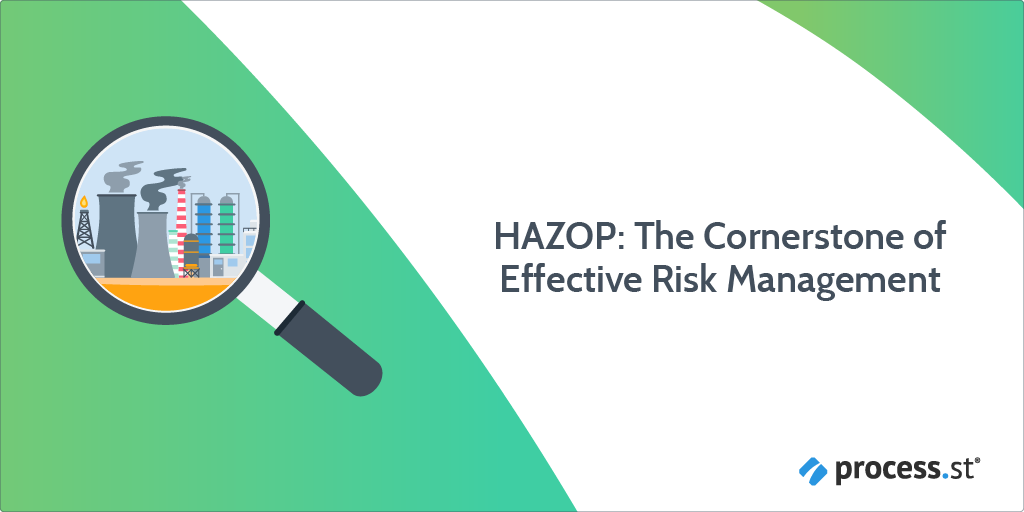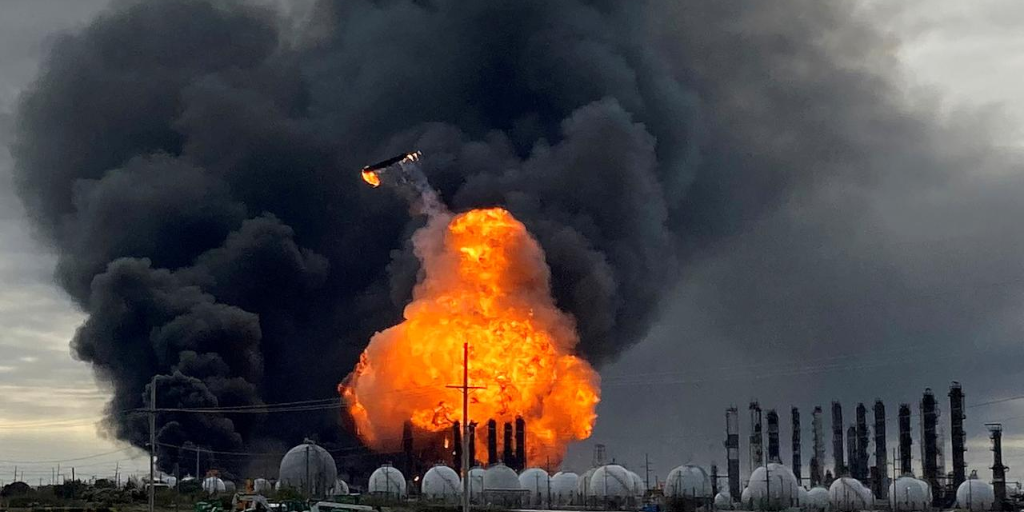
I’ve just read an article.
The first two lines scared the living crap out of me:
“Dihydrogen Monoxide. It’s everywhere. It’s in our bodies, it’s in our houses, and it’s in the air we breathe.
If we consume too much of it however, we will die.”
– Critical Risk Analysis for Our Daily Lives, Harvard
As a self-confessed worrier, you can imagine what happened when I read that.
Sheer. Blind. Panic.
Until I read the next line;
“Dihydrogen Monoxide is just the chemical name for water”
Yes, I did feel silly. But it did get me thinking.
About ‘risk’ of all things.
Risk is everywhere, in everything we do.
As we’ve just read; there’s a risk of dying from drinking too much water. There’s a risk of catching coronavirus every time we leave the house. Risk of breaking an ankle slipping on spilled coffee at work. Risk of choking on a toast crumb.
So, given that everything in work and life is so risky, how are we able to work and live?!
Through managing the risks we face.
Which brings me to the point of this HAZOP post.
HAZOP (which stands for Hazard and Operability) is a way of managing risks. It’s a technique that identifies potential hazards and functional flaws in new or existing systems and processes.
To get to grips with how to manage risk with HAZOP, we’ll cover the following topics in this Process Street post:
- What is HAZOP?
- How to conduct a HAZOP
- Where did HAZOP come from?
- Who uses HAZOP?
- How to implement HAZOP with Process Street
If you need a little convincing, here’s a sneak peek of the free HAZOP Process that we’ve created. Check it out and get it for free below.
Pour yourself a glass of Dihydrogen Monoxide, and let’s get started!
What is HAZOP?
HAZOP, otherwise known as a HAZard and OPerability study, is a risk management technique. It’s a systematic way to identify hazards in a particular process and manage the risks associated with them.
“It not only identifies ‘hidden hazards’ (HAZ) but also generates a wealth of practical improvements that can make a process more productive (OP)” – Ian Greenwood (My Dad), Retired Works Engineer, Huntsman Tioxide, Greatham Works
We’ll get onto the relevance of this later, but my Dad is a retired chemical engineer. Having “sat in on hundreds of HAZOPs” in his time, if anyone knows what HAZOP is, it’s him.
Before we delve deeper into the realms of HAZOP, let’s quickly define what we mean by risk and what we mean by hazard.
A hazard is a potential source of harm that, if encountered, could initiate a range of undesirable consequences. Risk is generally defined as potential exposure to loss, created by a hazard.
The basic principle behind HAZOP is that normal conditions are considered safe, and hazards only occur when there is a deviation from those normal conditions. A HAZOP study strives to seek out those deviations and grade the consequent hazards on how likely they are to happen and how severe they’re likely to be.
“A well run HAZOP process will encourage the participants to share their experiences and improve the design to bring peace to future operations. This is sometimes missed by organizations that only see this process as a ‘tick the box’ exercise to wave in the face of a legislator” – Ian Greenwood
So that’s what HAZOP is, but how do you conduct one?
Glad you asked!
How to conduct a HAZOP
As we know, the main objective of a HAZOP is to find situations that could pose a hazard to, or limit the operability of, a particular process or system – both new and existing.
To do this, the particular process or system is broken down into sections.
Each section is dissected, questioned, and discussed by a cross-sectional team of experts from different parts of the organization. The team considers every possible scenario and every potential deviation from the normal, to identify what might go wrong.

“Where the result of a variation would be a danger to workers or to the production process, you’ve found a potential problem” – What is HAZOP, GraphicProducts
To make sure they have thought of every possible scenario or variation, the HAZOP team uses a set of guidewords.
What are guidewords?
Guidewords are a set of words that prompt the HAZOP team to question all elements of the system or process they are assessing.
“By using a standard set of guidewords, the team is able to identify where they see risks or problems that may have passed unnoticed, had the design only been reviewed by a professional peer” – Ian Greenwood
Where do guidewords come from?
“HAZOP guidewords are derived from the behavior of the elements that interact to make up a particular system” – Ian Greenwood
For example; an electrical system HAZOP might include guidewords around energy, current, and voltage. Whereas a call center HAZOP might focus on communication flows, understanding, and error handling.
The questions posed by a HAZOP team, using guidewords, might go a little like this:
- What would happen if the valve was opened too late?
- What if the valve was opened too early?
- What would happen if the pressure at this valve was too high?
- What if the pressure was unexpectedly low?
This made a lot of sense to me, but it did pose a question:
How can you be sure these guidewords will lead you to think of every possible deviation?
The answer?
“Providing you assume that all these elements can deviate higher or lower and change direction relative to your expectation or design, then you are unlikely to miss anything significant” – Ian Greenwood
(To add a small caveat to the above; this does depend on the HAZOP leader encouraging the team to ‘think out of the box’ and resisting the temptation to assume that it can’t happen because it hasn’t so far!)
Once the HAZOP team has listed every cause and consequence of each of the discovered deviations, they can then start to propose what safeguards are needed to lower the risk of the identified hazards and operational failures from occurring.
“Catching these ‘unseen’ issues makes for a more robust and therefore safer design, but it also negates the need to revisit the design once the process is up and running…this saves the costs of modification which are invariably expensive both in materials and lost output” – Ian Greenwood
The HAZOP process might seem overwhelming at first, but it can be broken into four simple steps.
The four steps in a HAZOP process
HAZOP process step # 1: Form a HAZOP team
It’s crucial that the HAZOP team is formed using people from all parts of the organization. The team must have a broad range of experience and knowledge, and an acute understanding of the system or process being assessed.
HAZOP process step # 2: Identify the elements
Step two is all about splitting the system or process into sections that can be examined by the HAZOP team. For each section, the team should identify the planned design or operating parameters at that particular point.
HAZOP process step # 3: Consider possible variations
For each identified parameter, the team then considers the effects of a deviation from the normal. Using standard guidewords they will discuss and identify where they see potential risks or problems.
HAZOP process step # 4: Identify hazards or failure points
Once all the potential deviations have been discovered, the team can then document these concerns, estimate the impact of a failure at that point, and determine the likelihood of that failure.
To help you follow these four steps, the team at Process Street have created a HAZOP Process template for you to follow:
Use this template to form your cross-sectional HAZOP team, discuss and list every possible deviation from the normal, identify critical safety and improvement points, and assign actions.
Click here to access the HAZOP Process Template!
If you’re not a user of Process Street yet, don’t worry. Click here to start a free trial and bag this template.
We’ve got more templates to come later, plus some handy tips on how to customize your templates so they fit your company like a glove.
For now, back to HAZOP…
So, in a nutshell, that’s what HAZOP is and that’s how HAZOP works. But, to truly understand the importance of HAZOP and the benefits it brings to organizations, we need to know where it came from and why it was created.
Where did HAZOP come from?
The Hazard and Operability Study has become one of the most powerful tools for identifying process hazards, specifically in the chemical process industries (CPI). Which, coincidentally, is where the concept came from and why I asked my Dad for his experience and knowledge on the subject.
To explain how the CPI developed the concept I’m going to tell you a little story.
It’s not a pretty story, but it is unfortunately a true one.
Life before HAZOP
“The Flixborough disaster is perhaps the most discussed and dissected of all accidents in the chemical process industry” – Role of HAZOP in Assessing Risk in Chemical Process Industries, ResearchGate
Flixborough, a small town in the UK, was previously known for its production of nylon. This was thanks to the £200million chemical plant, Nypro Works, which produced the raw materials for nylon.
That was then.
Now, Flixborough is best known for being at the center of the UK’s worst industrial disaster.
It was 1974. It was a warm, sleepy Saturday afternoon in June, and it was seven minutes before 5 pm.
That was when it happened. When the chemical plant exploded.

28 men were killed instantly, 105 people were injured, and no one escaped the control room.
The fires burned for ten days. 200 homes within a six-mile radius were torn apart. 3,000 people were evacuated and over 2,000 animals died.
A terrible, terrible tragedy. But the question is; why did the plant explode?
As I’m not a chemical engineer, I won’t can’t go into loads of detail but, in short, the disaster happened during the processing of cyclohexane, a highly inflammable component liquid of nylon.
The process required large quantities of cyclohexane to be circulated through six reactors under elevated pressure (8.8 Kg/cm2) and high temperatures (155°C).
The day before the disaster struck, it was discovered that one of the reactors had a crack in it. A 6ft crack. So, the cracked reactor was quickly removed and a dog-leg shaped bypass pipe was put in place, to keep the reactors connected and the circulation of cyclohexane going.
However…
In a bid to keep the plant operational, there was little time for process testing, no qualified mechanical engineer on-site to oversee the design or construction of this dog-leg bypass pipe, and certainly no discussion about the potential hazards associated with the temporary modification to the reactor process.
“No calculations were done which took into account the forces arising from the dog-leg shape of the pipe; no drawing of the bypass pipe was made other than in chalk on the workshop floor, and no pressure testing was carried out either on the pipe or on the complete assembly before it was fitted” – Role of HAZOP in Assessing Risk in Chemical Process Industries, ResearchGate
As a result, the bypass pipe ruptured.
A large amount of cyclohexane escaped, and due to the high pressure and high temperatures, the plant exploded in a huge vapor cloud.

This disaster could’ve been avoided if only a systematic HAZOP had been done beforehand.
“The Flixborough disaster is a case in point – a broad multidisciplinary review of abnormal operations would in all probability have flagged up the potential for an explosion” – Ian Greenwood
Flixborough was a painful, tragic, and expensive mistake to make. It was also one of the main reasons why the management of risks associated with the operation of chemicals became a central focus on the corporate agenda.
One of the key leaders, driving this focus on process safety during that time, was Trevor Kletz, the “father of inherent safety“.
Who is the “father of inherent safety” and what’s he got to do with HAZOP?
Despite what many think, and what the sub-heading implies, Kletz didn’t create HAZOP. It was actually developed by the chemical plant he spent 38 years working for; Imperial Chemical Industries (ICI).

“The concept grew out of ‘critical examination’, a technique popular with ICI during the 1960s for examining management decisions” – Trevor Kletz – A lifetime Spent Saving Lives, The Chemical Engineer
This ‘critical examination’ technique was applied to the design of a new chemical plant. Over a four-month period, every aspect of the new plant was pulled apart and questioned. As a result, many potential hazards and operating problems were discovered, and the idea of HAZOP was born.
“It was, Kletz says, the first recognizable hazard and operability study (HAZOP)” – Trevor Kletz
But it wasn’t until after the Flixborough disaster in 1974 that HAZOP took its place as one of the most widely used risk management techniques within the chemical industry.
Kletz, having recently taken over the safety processes at ICI, could see the benefits that HAZOP could bring, not only to ICI, but to the whole industry.
“There was no realization at the time that safety required a technical input or should go much beyond removing obvious mechanical hazards and ordering protective clothing” – Trevor Kletz
He knew a process like HAZOP was needed to avoid another Flixborough. He quickly became a strong advocate of the concept and wrote a number of books and papers on the subject, and spoke at countless conferences about the benefits of risk management and safety processes, such as HAZOP.
As a result, the importance of risk management slowly began to trickle down into the rest of the chemical industry, and this is probably why some think of Kletz when talking about HAZOP.
So, we’ve discovered where HAZOP came from, how the concept was developed, and why it’s the most effective hazard identification technique for the chemical industry.
However! HAZOP isn’t only for chemical plants.
Who uses HAZOP?
“Every chemical plant has it’s ‘war stories’ – tales that are proudly held in the memories of the operating teams where things have gone wrong but they have managed to heroically and skilfully avert disaster” – Ian Greenwood
Although HAZOP is a risk management process that’s widely adopted by organizations within the chemical industry, it isn’t exclusively for chemical plants or organizations that have a dangerous potential for major disasters.
It’s a process that’s commonly used by the food and water industries. Although they don’t face hazards related to explosions or chemical releases, they do face hazards associated with contamination and hygiene levels.
It’s also used by pharmaceutical companies and for industrial and environmental health and safety applications. And, let’s not forget, HAZOP was originally developed to help senior management make tough decisions.
Think back to my earlier point; risk is everywhere. It’s in everything we do and everywhere we go. If all organizations adopted a process like HAZOP to manage their risks, they’d minimize costs and save lives.
Now that we’ve established HAZOP can be used by any organization in any industry, let’s look at how you could implement a risk management process, like HAZOP, into your organization.
To do this, we’ll need to familiarize ourselves with Process Street.
How to implement HAZOP with Process Street
I’ve already given you a fantastic HAZOP Process Template to help you manage your HAZOP process, but I have a few more tips, tricks, and templates for you to sink your teeth into.
Before I give you these, let me explain what Process Street is.
What is Process Street and what do we do?
Process Street is super-powered checklists. We are a state-of-the-art business process management (BPM) platform, which specializes in making recurring work fun, fast, and faultless for teams across the world.
Watch this short introductory video to find out more, or read this article on Getting Started with Process Street:
You can use Process Street to master your workflow management. You can create templates and run individual checklists. Check tasks off as you work through them, set deadlines, request approval, assign tasks, and track your teams progress.
Not only that, but you can connect your checklists and templates to thousands of apps through Zapier, webhooks or API integration to manage your processes and automate your workflows.
Watch this webinar, hosted by our very own Blake Bailey, for some fancy tips on how to automate your processes:
Right. Now you know who we are, let me tell you how we can help.
How can Process Street help with HAZOP?
We know that incidents can be avoided by properly assessing and managing risk. That’s why organizations need processes like HAZOP.
However, conducting a HAZOP study in isolation isn’t always enough.
“The different stages of the HAZOP process provide a powerful risk management tool but as it only identifies hazards, a quantified risk assessment (QRA) process needs to be adopted in tandem” – Ian Greenwood
Below are some risk management templates that you can use, alongside your HAZOP Process Template, to assess and manage risk in your organization.
Risk Management Process Template
Use this checklist to streamline the risk management process and reduce human error by providing a reliable, simplified framework in the form of individual, actionable steps.
Click here to access the Risk Management Process Template!
FMEA Template: Failure Mode and Effects Analysis
Use this template to identify potential problems and prioritize them so that you can begin to tackle or mitigate them.
Click here to access the FMEA Template: Failure Mode and Effects Analysis!
Office Risk Assessment Checklist
Use this checklist to ensure that the correct precautions are in place to address risks posed by potential hazards in the office.
Click here to access the Office Risk Assessment Checklist!
Sustainability Risk Management Checklist
Use this checklist to manage the environmental and social risks associated with your business strategy. It’s about making sure you meet the economic needs of your business alongside environmental and social needs.
Click here to access the Sustainability Risk Management Checklist!
These templates are great as they are, but they could be even better.
This is where Process Street steps it up a notch.
You can use any of the below features to turn your templates into supercharged processes that will suit your business needs perfectly:
- Stop tasks
- Dynamic due dates
- Task permissions
- Conditional logic
- Approval tasks
- Embed widget
- Role assignments
I know this is a lot to take in, but it is such an interesting concept! If you agree, you might like these related articles.
HAZOP related articles
If you’d like to read more about risk assessment and management, check out the free resources below:
- Business Risk: The 3 Main Threats to Your Business and How You Can Manage Them
- Risk Mitigation: What It Is and How to Implement It (Free Templates)
- Why You Need a Risk Management Process (+ Free Template)
- The Ultimate Risk Management Guide: Everything You Need to Know
- What Is ISO 31000? Getting Started with Risk Management
- Business Trip Security: What are the Risks for Traveling Employees?
- Basics of Enterprise Risk Management (ERM): How to Get Started
- How Trustworthiness and Risk Affects Your SEO
- The Power of Process
The task of analyzing hazards in a workplace or system can seem daunting. But, without an effective risk analysis process in place, potential hazards may not be discovered until it’s too late.
And with that, I will leave you with some final words from my Dad (he is available for comment!)
“The discipline of considering changes to normal operations by involving a cross-sectional team, is an important check on the haste and poor operator awareness that has characterized many significant incidents such as Flixbourough, Chernobyl, and Texas City Refinery.
Process industries can no longer ‘wing it’ when it comes to managing their hazards and adoption of HAZOP is a good way to lay your foundations for an across the board safety awareness culture” – Ian Greenwood
Oh, and some final words from me: Watch your Dihydrogen Monoxide intake!

We’d love to hear your questions, thoughts, or experiences around HAZOP in the comments below. Who knows? You may even get featured in an upcoming article!







 Workflows
Workflows Forms
Forms Data Sets
Data Sets Pages
Pages Process AI
Process AI Automations
Automations Analytics
Analytics Apps
Apps Integrations
Integrations
 Property management
Property management
 Customer management
Customer management
 Human resources
Human resources
 Information technology
Information technology





Amanda Greenwood
Amanda is a content writer for Process Street. Her main mission in life is to write content that makes business processes fun, interesting, and easy to understand. Her background is in marketing and project management, so she has a wealth of experience to draw from, which adds a touch of reality and a whole heap of depth to the content she writes.